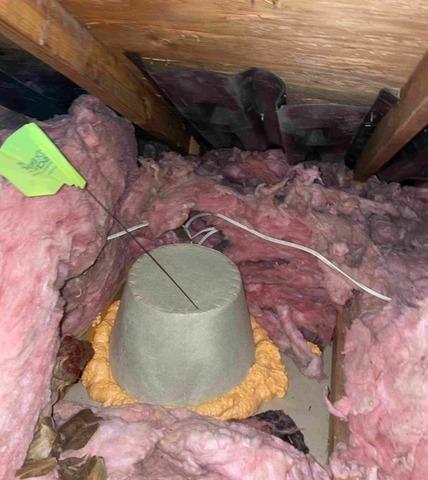
Before We Got Started
Here is what the attic looked like before our crew got started. Old fiberglass was not up to the task of keeping this home warm anymore. Our Technicians had a lot of work ahead of them.

Time to Air Seal
Our Technicians use fire block foam to air seal any small areas that air could be escaping. Pictured here is one of the big areas that air can move to and from your attic, recessed lights. We make sure to cover them and then air seal to create a strong barrier. Covering them also prevents and issues that could arise with direct heat on the cellulose insulation. While Cellulose wont catch on fire, it can still smolder.

Spray Foam Added to Exterior Walls
On this job we spray foamed the exterior wall of the attic. The external wall can be a problem spot for temperature change, wit the spray foam it creates a solid barrier that doesn't allow the outside temperatures to make their way in.

Spray Foam of The Duct Work
This home has metal duct work for the HVAC system in the attic. To help prevent leaks that cause the system to over work itself or the ducts from sweating, our crew applied spray foam to the duct work.

Blown in Cellulose Insulation
The final step of the project is blowing in the new layer of Cellulose insulation. This creates a strong insulated barrier that traps the conditioned air where it belongs, in your home, While keeping the cold air of winter, and humid air of summer out of the living space.

